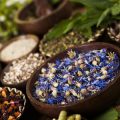Understanding Shatavari in Indian Tradition
Shatavari, scientifically known as Asparagus racemosus, holds a special place in Indian tradition, especially within the holistic framework of Ayurveda. Revered as the “Queen of Herbs,” Shatavari has been used for centuries to support women’s health across different stages of life. In the context of motherhood, it is valued for its reputed benefits in enhancing lactation and nurturing maternal well-being. From ancient scriptures to present-day home remedies, Indian mothers have trusted Shatavari to balance the body and mind during the delicate postnatal period. Rooted deeply in our cultural practices, this herb is commonly included in daily diets—often as powders, capsules, or traditional herbal concoctions—making it a staple in many Indian households seeking natural ways to support breastfeeding. Its legacy continues as modern research and ancestral wisdom intersect, keeping Shatavari relevant for today’s mothers striving for nourishment, harmony, and holistic health.
2. The Link between Shatavari and Lactation
In India, Shatavari (Asparagus racemosus) has held a sacred place in traditional Ayurvedic medicine for centuries, especially when it comes to nurturing mothers. The word “Shatavari” means “one who possesses a hundred husbands,” symbolizing its potent support for female health and vitality. For countless Indian families, Shatavari is the go-to herb for promoting lactation and supporting breastfeeding mothers. This trusted remedy is believed to nourish the body, calm the mind, and enhance ojas (vitality), making it deeply respected in both rural and urban settings.
Traditionally, Shatavari is offered to new mothers in various forms—powder, tablets, decoctions, or mixed with milk and ghee. Elders and Ayurveda practitioners recommend it soon after delivery to help increase milk flow and maintain the quality of breast milk. The gentle, cooling nature of Shatavari supports the body’s natural ability to produce milk by balancing hormones and replenishing lost energy post childbirth. Its sattvic qualities are said to foster emotional stability and nurture self-care, which are essential for a peaceful breastfeeding experience.
How Shatavari Is Used Across India
| Region | Common Usage | Cultural Practices |
|---|---|---|
| North India | Shatavari powder mixed with warm milk | Given during postpartum rituals like “chhathi” |
| South India | Added to herbal decoctions with other spices | Used in “jeeraka kashayam” for new mothers |
| West India | Included in laddus (nutritional sweets) | Distributed as part of baby shower ceremonies |
The Emotional & Physical Support of Shatavari
Beyond its physical benefits, Shatavari’s role extends into emotional well-being. In many Indian homes, caring for a new mother involves not just nourishing her body but also her spirit. Women are encouraged to rest, practice gentle self-massage (abhyanga), and receive community support while consuming Shatavari daily. This holistic approach reflects the deep wisdom of Ayurveda—honouring both the physical needs and inner balance of breastfeeding mothers for optimal lactation and family harmony.

3. Key Benefits of Shatavari for Indian Mothers
Shatavari, deeply rooted in Ayurveda and Indian traditional practices, holds a special place in supporting new mothers. One of its most celebrated benefits is enhancing milk production, but its value extends far beyond lactation alone.
Nourishment for Body and Mind
Shatavari acts as a rasayana, or rejuvenator, providing essential nutrients that help replenish the body after childbirth. Rich in phytoestrogens, vitamins, and minerals, it nourishes both mother and baby through enriched breast milk. Indian mothers often include Shatavari in their diets as a natural way to restore vitality and strength, especially when facing fatigue or weakness in the postpartum period.
Promoting Hormonal Balance
Hormonal fluctuations are common after delivery, sometimes causing mood swings or irregularities in milk supply. Shatavari helps regulate hormonal activity due to its adaptogenic properties. This regulation is particularly important for Indian mothers who may experience stress from adjusting to new routines and societal expectations. By balancing hormones, Shatavari supports consistent lactation and overall reproductive health.
Supporting Emotional Well-being
The postpartum journey can bring emotional ups and downs. Traditionally, Indian families have used Shatavari to calm the mind and uplift the spirit. Its soothing qualities help reduce anxiety and promote relaxation, creating a nurturing environment for both mother and child. As part of daily self-care rituals, Shatavari encourages mothers to prioritize their mental health alongside physical recovery.
A Holistic Approach Tailored for India
The use of Shatavari blends seamlessly with India’s rich heritage of self-care during the sutika kala (postnatal period). Whether consumed as powder mixed with warm milk (a common home remedy) or as part of Ayurvedic formulations recommended by elders, Shatavari embodies the wisdom of generations—offering comprehensive support for lactation, balance, and emotional harmony.
4. How to Use Shatavari: Forms and Local Practices
Shatavari holds a special place in Indian households, especially for new mothers looking to boost milk production. Its versatility means it is available in several forms, each suited to different preferences and lifestyles. Below, we explore the most popular ways Shatavari is consumed across India, highlighting both modern supplements and time-honored local recipes and rituals.
Common Forms of Shatavari Consumption
| Form | Description | How It’s Used |
|---|---|---|
| Powder (Churna) | Finely ground root powder, the traditional form | Mixed with warm milk or water, often sweetened with jaggery or honey; taken once or twice daily |
| Tablets/Capsules | Modern, convenient supplement form | Consumed as per Ayurvedic doctor’s guidance; suitable for those who prefer quick intake |
| Syrup/Tonic | Liquid preparation, sometimes combined with other herbs | Popular among mothers unable to digest powders; measured doses as prescribed |
| Homemade Remedies | Traditional recipes passed through generations | Infused in kheer (rice pudding), laddoos, or herbal teas; often prepared during postpartum care rituals |
Local Recipes and Rituals Involving Shatavari
Across different regions of India, families have their own cherished methods of preparing Shatavari-based remedies for lactating mothers. In South India, Shatavari Kheer, a nourishing rice pudding infused with Shatavari powder and ghee, is a favorite postpartum dish. In North India, Shatavari Laddoo, made from roasted flour, ghee, nuts, and Shatavari powder, is offered to new mothers as an energy-rich snack. Herbal teas combining Shatavari with fennel seeds and ajwain are also commonly prepared to soothe digestion while supporting milk flow.
The Role of Rituals and Community Support
The use of Shatavari is often embedded within cultural rituals that emphasize care and nourishment for new mothers. Elders may prepare special meals during the “jaapa” period (postnatal confinement), ensuring that the mother receives regular doses of Shatavari in various forms. These practices not only deliver the physical benefits of increased milk production but also offer emotional support through communal involvement—a key aspect of holistic well-being in Indian traditions.
5. Safety, Precautions, and Who Should Consult
Shatavari is deeply rooted in Indian Ayurveda and is widely respected for supporting lactation among new mothers. However, while Shatavari is natural and generally considered safe, it is vital to approach its use with mindfulness, especially when used for increasing breast milk production.
Consulting Healthcare Professionals
Before starting any herbal supplement, including Shatavari, it is crucial to consult a qualified healthcare provider or an Ayurvedic practitioner. Every woman’s body constitution (prakriti) and health condition differ, and personalised guidance ensures safety. Consulting your family doctor, gynaecologist, or a certified Vaidya can help you make informed decisions that align with both modern medicine and traditional Indian wisdom.
Potential Side Effects
Though rare, some mothers may experience mild side effects such as digestive discomfort, loose motions, or allergic reactions. If you notice symptoms like rashes, itching, or difficulty breathing after consuming Shatavari, discontinue its use immediately and seek medical attention. Pregnant women should only use Shatavari under strict supervision as per the advice of their doctor.
Cultural Guidance for Safe Usage
In India, elders and experienced mothers often recommend tried-and-tested home remedies, but it is essential to balance these suggestions with professional advice. Traditional preparations like Shatavari kalpa or churn are popular in many regions; however, the quality and dosage should be carefully monitored. Always purchase from reputable sources and follow prescribed dosages to avoid complications.
To summarise, while Shatavari offers significant benefits for enhancing milk production in Indian mothers, using it safely requires an integrated approach—respecting both scientific knowledge and cultural heritage. By consulting healthcare professionals and being aware of your body’s responses, you can enjoy the nurturing benefits of Shatavari with peace of mind.
6. Integrating Shatavari into Holistic Postnatal Care
Embracing motherhood is a sacred journey, and the postpartum period in India has always been guided by age-old wisdom. Shatavari, cherished in Ayurveda for generations, is more than just a herbal supplement—it is a gentle ally on the path of postnatal recovery and lactation support. To truly harness its benefits for increasing milk production, it is essential to view Shatavari as one element within a balanced and holistic approach to maternal health.
Honouring Traditional Nutrition
Indian families often emphasize nourishing foods like dal, rice, ghee, and laddoo after childbirth. Including Shatavari—whether as a powder mixed with warm milk or in herbal formulations—can further enhance this traditional diet. Its cooling and rejuvenating qualities complement other nutritious foods, supporting both the mothers strength and her ability to produce ample breast milk.
Self-Care: A Cornerstone of Healing
The postpartum phase is also a time for self-care rituals that nurture both body and mind. Gentle Abhyanga (oil massage), adequate rest, and mindful breathing practices help restore balance after childbirth. When combined with Shatavari, these self-care routines promote vitality, emotional well-being, and resilience during the early days of motherhood.
Ayurvedic Wisdom for Modern Mothers
Drawing from the holistic teachings of Ayurveda, it is important to remember that every mother’s needs are unique. Consulting an Ayurvedic practitioner can help customize the use of Shatavari based on individual constitution (Prakriti) and specific postnatal challenges. By weaving together nutrition, self-care, and time-honoured herbal remedies like Shatavari, Indian mothers can empower themselves on their breastfeeding journey—honouring both tradition and personal well-being.
In summary, integrating Shatavari into daily postpartum care reflects a deep respect for holistic health—balancing nourishment, self-compassion, and ancient Ayurvedic guidance to support abundant milk production and joyful motherhood across India.


